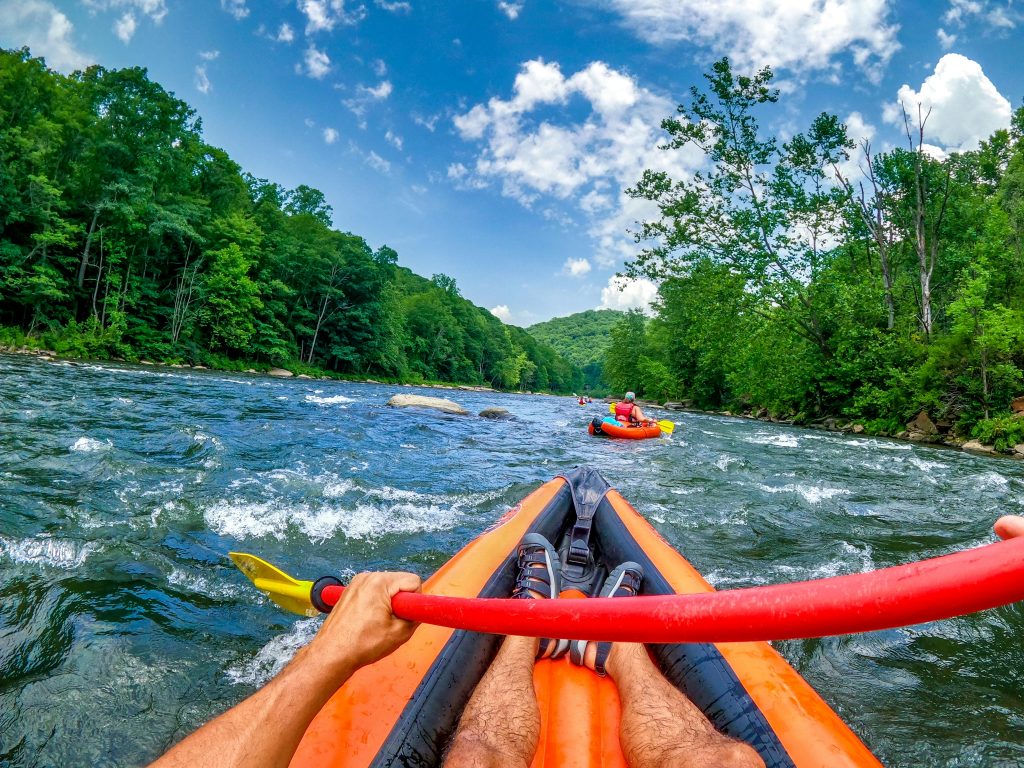Kayaking for Fitness: A Paddler’s Guide to Getting in Shape

Kayaking isn't just a way to explore scenic waterways and connect with nature; it's also an excellent form of exercise. Whether you're paddling through tranquil lakes or navigating rapid rivers, kayaking engages your whole body, offering a unique combination of strength training, cardiovascular endurance, and mental relaxation. This guide will provide workout plans, cross-training activities, and nutrition tips to help paddlers of all levels enhance their fitness and kayaking performance.
Workout Plans: Exercises and Routines for Paddlers of All Levels
Beginner Workouts: If you're new to kayaking or fitness in general, start with foundational exercises that build core strength and stability. Planks, Russian twists, and leg raises will strengthen your core, while push-ups and pull-ups enhance upper body strength. Aim for short, 20-30 minute paddling sessions at a moderate pace to build endurance.
Intermediate Workouts: As you become more comfortable, incorporate interval training into your paddling sessions. Alternate between high-intensity paddling for 1-2 minutes and moderate paddling for 3-4 minutes. On land, add kettlebell exercises and dumbbell rows to increase strength, and consider incorporating yoga or Pilates to improve flexibility and core strength.
Advanced Workouts: For the experienced paddler looking to further challenge themselves, add longer distance paddles with varying intensities. Incorporate functional fitness exercises like battle ropes, deadlifts, and medicine ball slams to simulate the dynamic movements of kayaking. Cross-training with other aerobic activities like swimming or cycling can also enhance cardiovascular fitness.
Cross-Training: Complementary Activities to Enhance Your Kayaking Skills and Fitness
Cross-training is vital for developing the diverse set of skills needed for kayaking, helping prevent injuries by balancing muscle groups and improving overall athleticism.
- Swimming: Improves cardiovascular fitness and builds endurance, while also familiarizing you with being in the water, an invaluable skill for any kayaker.
- Cycling: Builds leg strength and cardiovascular endurance, offering a great lower-body counterbalance to the upper-body focus of kayaking.
- Strength Training: Focus on compound movements such as squats, deadlifts, and overhead presses to build strength in the muscles used during paddling.
- Yoga: Enhances flexibility, core stability, and mental focus, all critical aspects of effective and efficient paddling.
Nutrition Tips: Eating Right to Fuel Your Paddling Adventures
Proper nutrition is just as important as physical training when it comes to kayaking fitness.
- Pre-Paddle Meals: Opt for a meal high in complex carbohydrates and protein about 2-3 hours before paddling. Oatmeal with nuts and fruit, or a chicken and vegetable wrap, can provide sustained energy.
- Hydration: Drink plenty of water before, during, and after your paddling session. Consider bringing an electrolyte replacement drink for longer sessions to replenish lost minerals.
- Post-Paddle Recovery: Within 30 minutes of finishing your paddle, consume a meal or snack rich in protein and carbohydrates to help repair muscles and replenish energy stores. A protein shake with a banana or a quinoa salad with vegetables and lean protein are good options.
- Snacks: For longer paddling excursions, pack easily digestible snacks like energy bars, fruit, or trail mix to keep your energy levels up.
Conclusion
Kayaking for fitness is a rewarding pursuit that can significantly improve your physical health and mental well-being. By following a structured workout plan, engaging in cross-training activities, and maintaining a balanced diet, you'll not only become a better paddler but also enjoy the broader benefits of a healthy lifestyle. Remember, the key to success is consistency and progressively challenging yourself both on and off the water. So grab your paddle, hit the water, and start paddling your way to fitness!
